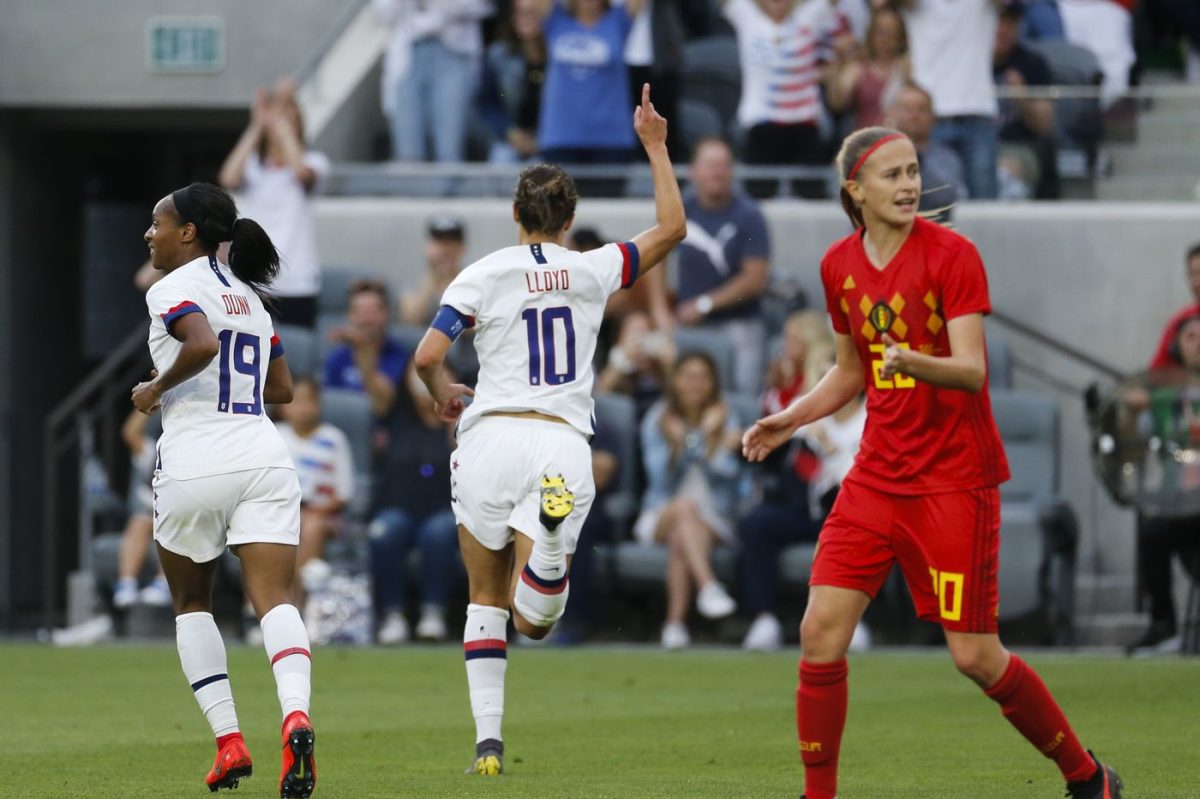Gender in sports has been an issue for many years and it’s no secret. With the rise of soccer over the past century, and the more recent rise of female soccer, the large divide in men and women’s soccer development has become all the more obvious. But who is to blame?
In order to better understand the situation, it’s important to know a bit of the history of women playing soccer across the world.
Competitive female soccer games started at the same time as men’s in the early 1860s when the English Football Association (FA) first standardized the rules.
Female soccer was actually quite successful and even equaled mens soccer in England until the early 1920s following the end of the First World War. In fact, women in England actually began playing soccer due to their employments in factories for ammunition for the war.
The Dick, Kerr Ladies FC (DKL) started in a munitions factory in Preston after a few women beat a team of men in a friendly kick-a-bout. They, alongside a coworker named Alfred Frankland, founded the team as a charity team to raise money for injured servicemen from the war. Over the years, they raised thousands of pounds which today would be worth millions.
Women’s teams became quite popular, especially the DKL, which became one of the most popular teams in England attracting crowds of numbers between 5,000-50,000 to their games. One game brought about 53,000 fans when the played at Everton FC’s ground, Goodison Park.
This is where the issues began.
After the end of the war, members of the FA began worrying about the growing popularity towards women soccer and thought that they would overtake the men. A rumor went around, that was neither confirmed nor denied, that the money they were raising was not all going to the intended targets.
In a move that undoubtedly forever hurt the development of women’s soccer around the world, the English FA banned women from playing in any ground associated with them on the basis that soccer damaged women’s bodies.
This decision led to the disbandment of many women’s teams, however the DKL continued playing on unofficial grounds and still managed to get a few thousand fans per game.
However, the decision made by the FA was most likely the most detrimental thing ever to happen to the development to women’s soccer and has most likely led to the slow development it has had.
Female soccer in the US also had a slow start to get to where it is now.
Women first began playing soccer in the US in the Craig Club Girls Soccer League which consisted of four teams from St. Louis, Missouri in the early 1950’s. However, this was short lasted and had very little success in comparison to the teams in Europe due to the lack of interest in women’s sports.
The US government only established gender equality laws in the early 1970’s. After they were put in place, colleges had to offer equal athletics to females as well. This was a step in the right direction, but still wasn’t enough as the first female soccer league in the US was only formed in 1995.
The 1990’s were the most important years for the development of women’s soccer both in the US and arguably the world.
While Europe had already experienced relative success with their two UEFA Women’s Championships in the 1980’s, the first women’s World Cup hosted by the China was critical in expanding its popularity and its development.
The 1991 Women’s World Cup was the first time in history where women were playing soccer on a global scale, not just continental, and attracted around 20,000 fans per game. The US were the victors, defeating Norway 2-1 in front of 65,000 people, and was a big boost for their development.
Attendance in World Cup games has been above 20,000 since 1999, where the average attendance per game reached 37,000 people.
However, the issues with women’s soccer are still very apparent.
Women’s teams in the United States’ Nationals Women’s Soccer League (NSWL) get an average of 6,024 people per game while the men’s Major League Soccer (MLS) teams receive 21,873, and although the level of the sport is higher for the men’s teams for the reasons already stated, the attendance in women’s games is significantly lower.
We don’t have to look as far as WIS to see these issues. The amount of people that go to girls games as opposed to the boys is a huge contrast. The amount of photos and recognition the boys get is far superior to the girls, and the boys are given much more support overall.
Just take a look at the hype email for the two varsity teams for the states games:
“Tomorrow the girls varsity team will play Wilson away at 2:45. I understand it is tough to go to that game but it would be great to get a nice crowd there to cheer on for the girls. They have put in some serious work this season and it would be a shame if we couldn’t celebrate their success with them.”
“The boys varsity soccer team will play St. Albans at 2:45 at home. We qualified 1st in the whole state, but as a reward they put us in the hardest bracket where every possible team we face is a really tough one. But it’s not the time to whine about it, to be the best we have to beat the best. Have we forgotten who STA are? We have BEEF. May I remind you these fans are always annoying and without a doubt they will try and infest our school with their fans. THEY WILL NOT LITTLE BRO US. At 2:50 when that bell rings I expect to see the WIS field packed with fans. Bring your school shirts, red shirts, scarfs, whatever other WIS gear you own, but it is absolutely crucial for you all to be there.”
Not only is there a huge difference in the wording and “passion” in the words used, but fans are given very little encouragement/incentive to go to the girls game and a “nice crowd” is all that’s asked for, while for the boys game its expected for the “WIS field [to be] packed with fans.”
If even at a small school level girls soccer is overlooked, then it’s no wonder that on a much larger scale, there is such a huge divide.
Soccer has become a very commercial sport and money has become, many times, the main focus for teams and soccer organizations. So, if women’s soccer is not bringing in money from ticket sales from fans, they receive less funding which in turn leads to less fan presence which creates an endless and destructive loop.
In the end, the heart of the issue is the lack of attention and funding given by fans and the major soccer organizations.
There have been efforts, though, to improve their game.
More recently, Brazil has attempted to solve the issue of the lack of women’s soccer in the country which they very much struggle with additionally. Of the 20 teams that participated in the Brazilian league in 2017, only seven had women’s teams.
The Brazilian soccer federation (CBF) declared that starting in 2019, for any Brazilian team that wants to compete in South America’s most prestigious and exciting competition, the CONMEBOL Libertadores, they must have, among other things, a female soccer team participating in some sort of national competition.
Additionally, the Luna Bar company has also promised to make up the pay difference of $31,250 from the World Cup bonuses between the US women’s team and men’s team.
In Europe, Spain recorded the worlds largest ever attendance for a women’s club game with over 60,000 fans attending the match between Barcelona and Atletico Madrid. Similarly in Italy, the Juventus vs Fiorentina match brought in 39,000 fans.
While there is still much left to be done, it is great to see how far women’s soccer has come and where it can go.
By: Nico Vallada


































































